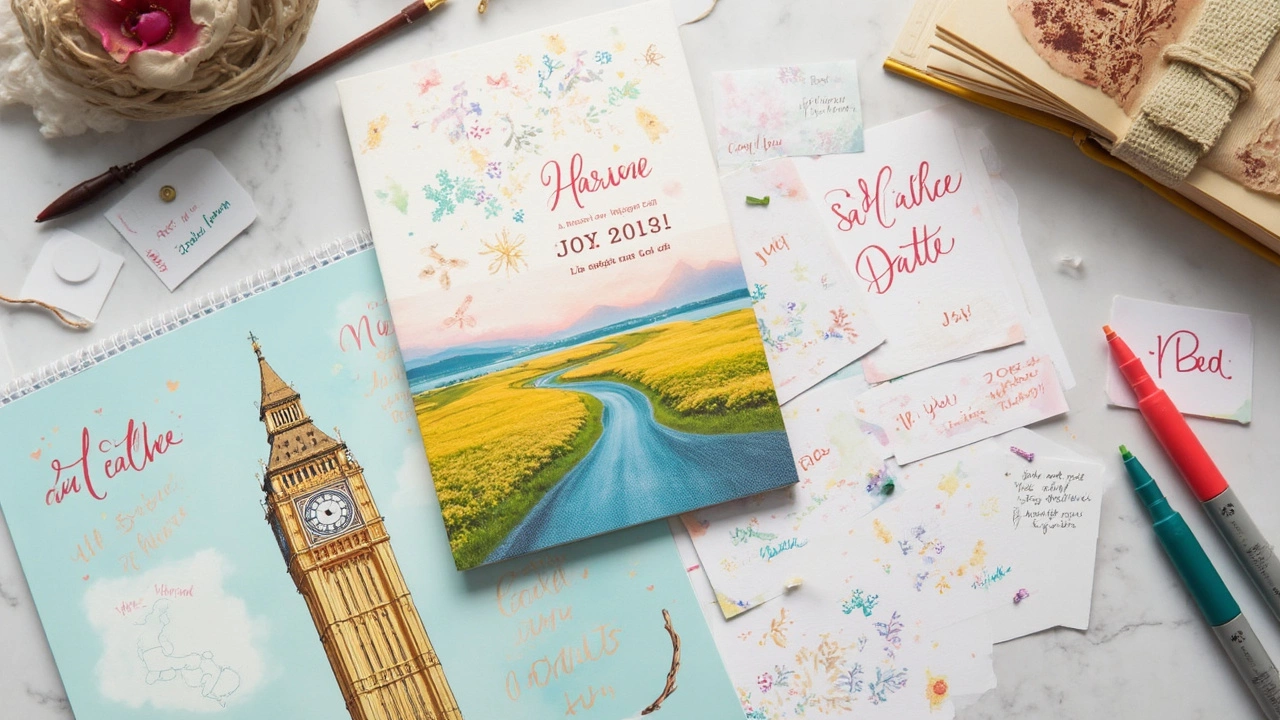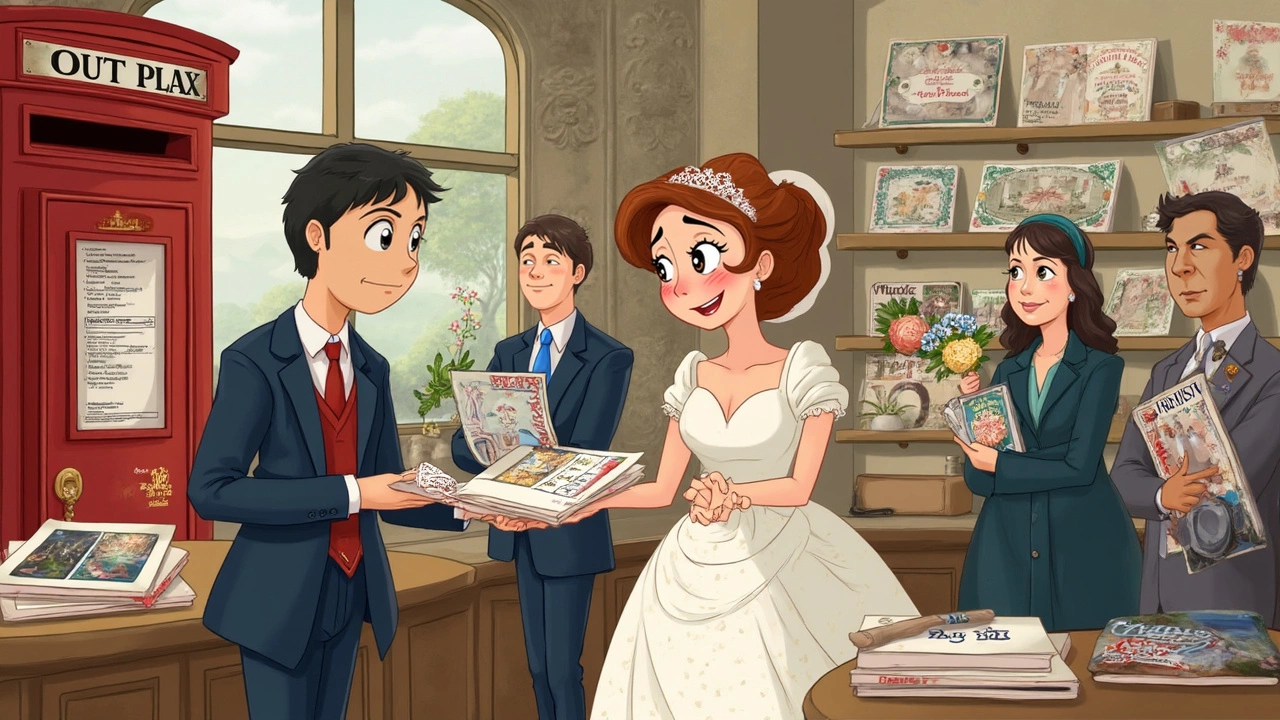Picture this: you get engaged, everyone’s excited, and almost immediately, the questions start rolling in. When's the big day? Where? Can we bring our kids? Before you even start dreaming about color palettes, there’s one little card that needs your attention: the save the date. It’s a small detail but wildly important for your guests—especially in this age where everyone’s calendars fill up faster than ever. People have more travel, busier weekends, and sometimes, several weddings in a single summer. The worst thing? Your favorite cousin RSVP-ing no because she’s already bought tickets to Italy. The timing of your save the date can make or break your guest list, and it’s a detail even the calmest couples can totally mess up.
Why Timing Save the Dates Matters More Than You Think
Most brides and grooms don’t realize how much the timing of a save the date can affect the mood and success of the wedding. Send it too late, and some guests won’t make it. Send it too early, and people lose track, start forgetting, and wonder if the wedding is actually happening. There’s an unofficial sweet spot that everyone in the industry talks about, and no, it isn’t just some Pinterest myth.
The classic window for sending save the dates is 6 to 8 months before the wedding. For a local wedding—like, your church down the road or your local park—6 months out works. This gives guests just enough time to block their calendars, but not so much that they forget about your wedding as the months roll by. Destination weddings flip everything upside down. Getting married abroad, or even in a different state? You’ll want to bump things up to 8 to 12 months since people will probably need to request time off work, buy pricey tickets, or even update their passports. (Fun fact: According to The Knot's 2024 survey, around 22% of weddings last year were destination weddings, so you're not alone if that's your route!)
Now, here’s one of those tiny things that most people miss: major holidays, busy seasons (like summer), and long weekends fill up lightning fast. Consider sending your save the dates at the higher end of these ranges if your wedding falls near something like Labor Day or New Year's Eve. Your friends might be weighing four invites at once and will RSVP fastest to the first one that lands in the mail.
Most couples actually underestimate how early in the process this card needs to go out. Think about all the details your guests juggle—flight prices, your friend who always needs dog-sitters, people with kids sorting out school breaks. Save the dates aren’t just for their benefit; they’re for your sanity, too. Fewer last-minute emails about 'when is it again?' means more time for you to taste cake and debate seating charts. No one has ever complained about getting too much notice for a wedding.
An easy-to-miss tip? If your wedding is in a place with limited accommodations (think: a pretty lakeside town with one hotel), get those save the dates out on the early side—around 10 to 12 months. Otherwise, your 80 guests will be left fighting over 20 hotel rooms at the end of Main Street.
A quick look at actual timelines hosts used recently helps. In The Knot’s 2024 data, couples who sent save the dates less than 5 months out for destination weddings saw, on average, a 16% higher decline rate, compared to those who gave their guests at least 9 months. A small detail, but it adds up fast when you’re hoping everyone important is there to see you say ‘I do’.
| Wedding Type | Best Time to Send Save The Date | Typical Decline Rate (late send) |
|---|---|---|
| Local | 6-8 months before | 9% |
| Destination (domestic) | 8-12 months before | 15% |
| Destination (international) | 10-12 months before | 18% |
| Holiday Weekend | 8-12 months before | 21% |

The Save the Date Checklist: What To Include and Mistakes to Avoid
Save the dates seem simple—just a date, a photo, slap a stamp, and you’re done, right? Not quite. There are a few bits of info people absolutely need to make travel plans. Here’s what your card needs (and doesn’t):
- wedding date (and year!)
- city and state (or full address if you’re not worried about privacy)
- your names
- "invitation to follow" somewhere small at the bottom
- wedding website if you have one (absolutely recommended)
No need for RSVP info or RSVP cards yet—those come with the actual invitation. Don’t stress about the exact timing of the ceremony or dress code either. This is just a warm-up for your big official invite. People are nosy, though, so a wedding website with details like airport info, room blocks, and rough schedule is a lifesaver. In fact, a lot of guests check for a couple’s wedding website before even texting the couple with basic questions.
If a plus-one is invited, add their name right on the envelope. The same goes for kids; make it clear if families are welcome. You have no idea how many family feuds start over a save the date that said 'The Smith Family' when only two seats were actually reserved. Don’t wing it—use your guest list spreadsheet to double-check every name.
Here come the pitfalls most couples fall into. The first is sending the card before you’ve nailed down your guest list. Save the dates are semi-official; once you mail it, you can’t really un-invite someone, unless you’re up for a truly awkward conversation later. Only send them to people who you are 100% sure will be on your final list. Alcohol fueled optimism is not your friend here. The second classic mistake is going digital-only without checking if your older relatives even use email (spoiler: half of them don’t). Sure, Minted, Zola, and Greenvelope make cute digital cards, but a paper version still feels special for a lot of folks.
If you’re really stuck, here’s a super simple ordered checklist:
- Decide on your guest list first (and double check spelling and addresses)
- Order your save the dates about 1-2 months before you actually plan to send (printing can take longer than you think!)
- Include your names, wedding date, location, and a note that an invitation will follow
- Use formal names on the envelopes to avoid confusion
- If you’re using a wedding website, test every link before sharing
- Send according to the right timeline for your type of wedding
Here’s a quick tip for the super organized: keep a spreadsheet of who you sent what and when. It sounds obsessive, but you’ll thank yourself when you’re tracking RSVPs three months later.

Special Circumstances, Digital Save the Dates, and Guest Communication
Not every wedding fits the classic mold. If you’re getting married in the off-season, like January or February, you might have more wiggle room on timing. Guests aren’t traveling for holidays and hotels are more open. Even so, stick to at least 6 months’ notice. The exception to any rule is always if you just can’t wait—some folks plan in under 6 months. In that case, send save the dates as soon as humanly possible, and follow up with invitations two months out. People appreciate early, clear communication.
Let’s talk digital. E-save the dates are now totally normal, especially among younger couples and guests who live in different cities or countries. They’re cheaper, quicker, and eco-friendly. But before you hit send, double-check your most important guests have a way to see it. Grandma doesn’t always check her email, and your best friend might have an inbox that looks like a spam war zone. Popular sites like Paperless Post, Greenvelope, and even Canva offer nice templates, and you can track who actually opens them. If you want a backup, send both—digital first for speed, paper for style. Plus, physical cards are a nice keepsake, especially if you’re into scrapbooking your wedding details later.
Sometimes, plans change. Venues fall through or pandemics pop up (see: 2020 weddings). If your date shifts, update your guests as soon as you can, even before you figure out new details. People are way more understanding than you think, as long as you keep them in the loop. A super short email blast or group text is fine in emergencies—just make sure to send a formal updated save the date once things are locked in again.
One last heads up: never include registry info on your save the date. Save that for your wedding website, or the actual invitations. Etiquette weirdos care about this more than you’d think, and some guests get grumpy if you look like you’re fishing for gifts before you’ve actually invited them. It’s a small but real social landmine. And speaking of etiquette, there’s no rule that says your save the date has to be a photo of the two of you in a field/forest/mountain with matching outfits. Get weird or go classic—it’s your call, but double-check whatever you choose actually fits in an envelope, weighs under an ounce, and doesn’t embarrass grandma.
To wrap up, the timing of your save the date is the secret sauce for a smooth wedding—and happier guests. Stick to the timelines, double-check those details, and don’t be afraid to add your own personality. You can’t control if Aunt Linda loses her invite under a pile of junk mail, but you can do everything possible to set her up for success, starting with a simple, perfectly-timed card in her mailbox.
